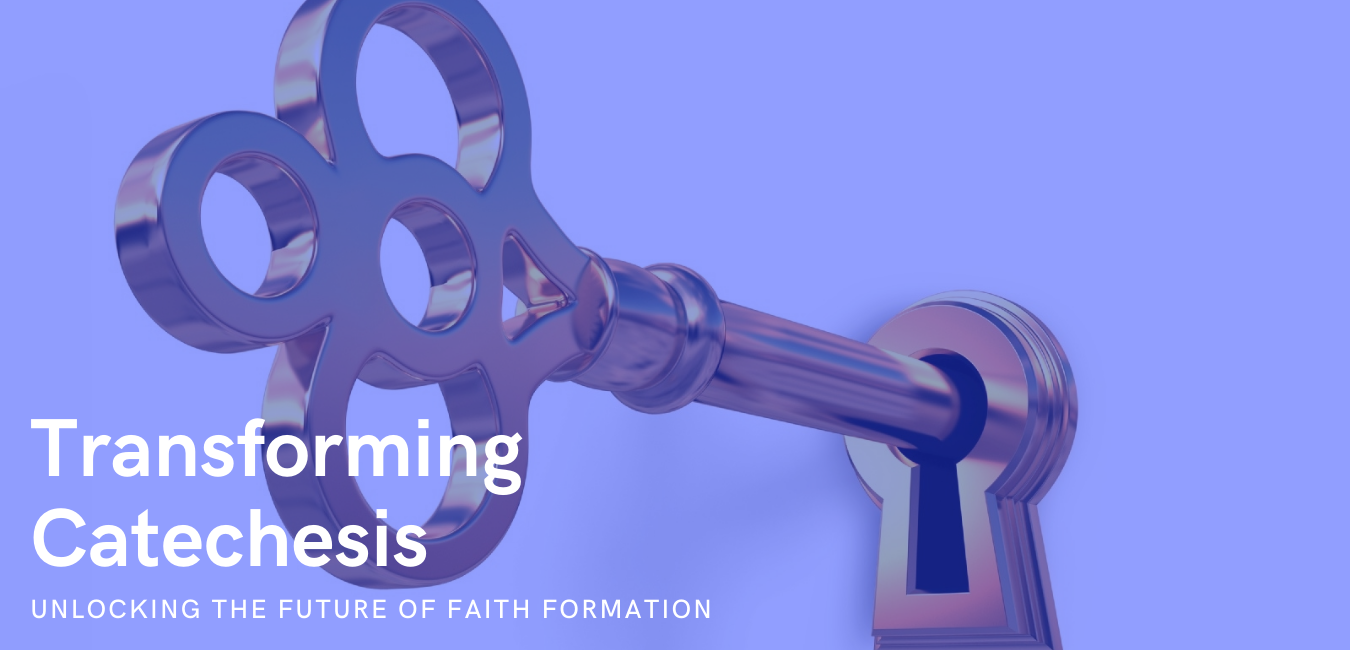After two millennia of evangelization and catechesis, does digital technology enhance or deter our efforts today? This question has many facets and is arguably one of the hottest topics in faith formation. What’s your opinion; Is digital catechesis possible?
Word of Mouth
The Good News was communicated for centuries primarily through preaching and story-telling. As the news of Jesus’ death and resurrection began to spread, the first Christian community began to organize. Jesus’ disciples and apostles began to meet and share stories about his words and deeds. Public proclamations began as St. Peter preached in Jerusalem and converted thousands.
Between roughly 50-100 A.D., Paul and others wrote letters to communities, apostles wrote Gospels, and John also wrote an apocalyptic vision in Revelation. We recognize these writings as the 27 books of the New Testament. These writings, or scriptural canon, was solemnly defined in 1546 at the ecumenical Council of Trent. Yet it wasn’t until monastic life in the sixth century that monks included copying biblical text as a way of “spreading the message of the Christian religion.” Word of mouth and eventually bibles copied by scribes were the primary ways the faith was shared and taught until the Fifteenth Century.
Printing Press
The Gutenberg Press surfaced around 1450 with metal movable type and applied replica casting. Johannes Gutenberg is known for producing the first printed bible, known as the Gutenberg Bible. Only around 180 of them were printed with roughly 25 complete copies surviving today.
It’s no secret that the printing press changed the world. New ideas could be printed and distributed in great quantities, reaching more people in quicker time than word of mouth. However, the printing press could produce and promote ideas that weren’t consistent with Catholic teaching. Eventually, church related manuscripts required church approval. Today, we are aware that books require ecclesial approval to be considered authentically Catholic teaching.
Even so, by 1605, newspapers, books and other printed material began to contribute to the growth of literacy and education for ordinary people. According to Jeremiah Dittmar, “The movable type printing press was the great revolution in Renaissance information technology and arguably provides the closest historical parallel to the emergence of the internet.”
The Digital Age
Usher in the Digital Age, also referred to as the Computer Age, Information Age, and New Media Age. The 1970s are recognized as the beginning of the Digital Age where innovations like computers and the Internet merged to provide easy access to information.
Fast forward to the 2000s, and handheld technologies such as smartphones and tablets took the Digital Age mobile. Coupled with educational websites and digital apps, educational technology (EdTech) began to permeate schools globally. Digital technology has changed pedagogical approaches to education. New approaches include Blended Learning, Flipped Learning, Student-created content. It has also changed the roles of teachers and students to that of facilitators and learners.
Digital Catechesis
Recognizing the parallel between the Printing Press and the Information Age, we can observe a similarity of how they have impacted the Church’s mission. The initial concern of unauthorized teaching prompted the vetting of print material. The Digital Age presents a similar challenges with alternative ideas and opinions that can easily be spread on the Internet and Social Media, however, the Church is still working through that process. But does that mean we should or should not use digital technology in catechetical ministry? Is digital catechesis possible, and is it a good idea?
Digital Culture
Chapter X, Section 3 of the new Directory for Catechesis speaks to catechesis in socio-cultural contexts. Paragraphs 359-372 present the challenges and opportunities of catechesis in the digital culture.
The U.S. Bishops eloquently describe the digital culture as “not only a part of the existing cultures, but is asserting itself as a new culture…” (359) that “represents a firmly established forum for reaching and involving young people” (360).
The directory continues with “The Church is called today to bring its own approach to proclaiming the Gospel up to date with the language of the new generations…” (370). However, “catechesis needs to understand the power of the medium while realizing that catechesis cannot be carried out solely by using digital tools, but by offering spaces for experiences of faith” (371).
Digital Challenge
Every child in our programs today has grown up with digital technology. Digital devices are the first thing many of them turn to in the morning and the last thing they see at night. The digital culture uses digital devices for information, socialization, education, and entertainment.
Many pioneer catechists have already begun exploring the use of digital tools for catechesis, but many are hesitant. There is no escaping the use of technology, but we must know how to use it well for catechesis prior to knowing how to use it as a lead to faith experiences. Is digital catechesis possible? I think so because its already happening in so many wonderful ways!
Are you interested in learning how to use digital technology for catechesis? Check out my new PowerUp! Digital Catechesis Course for Future Ready Faith Formators. Its free for a limited time.


Be First to Comment